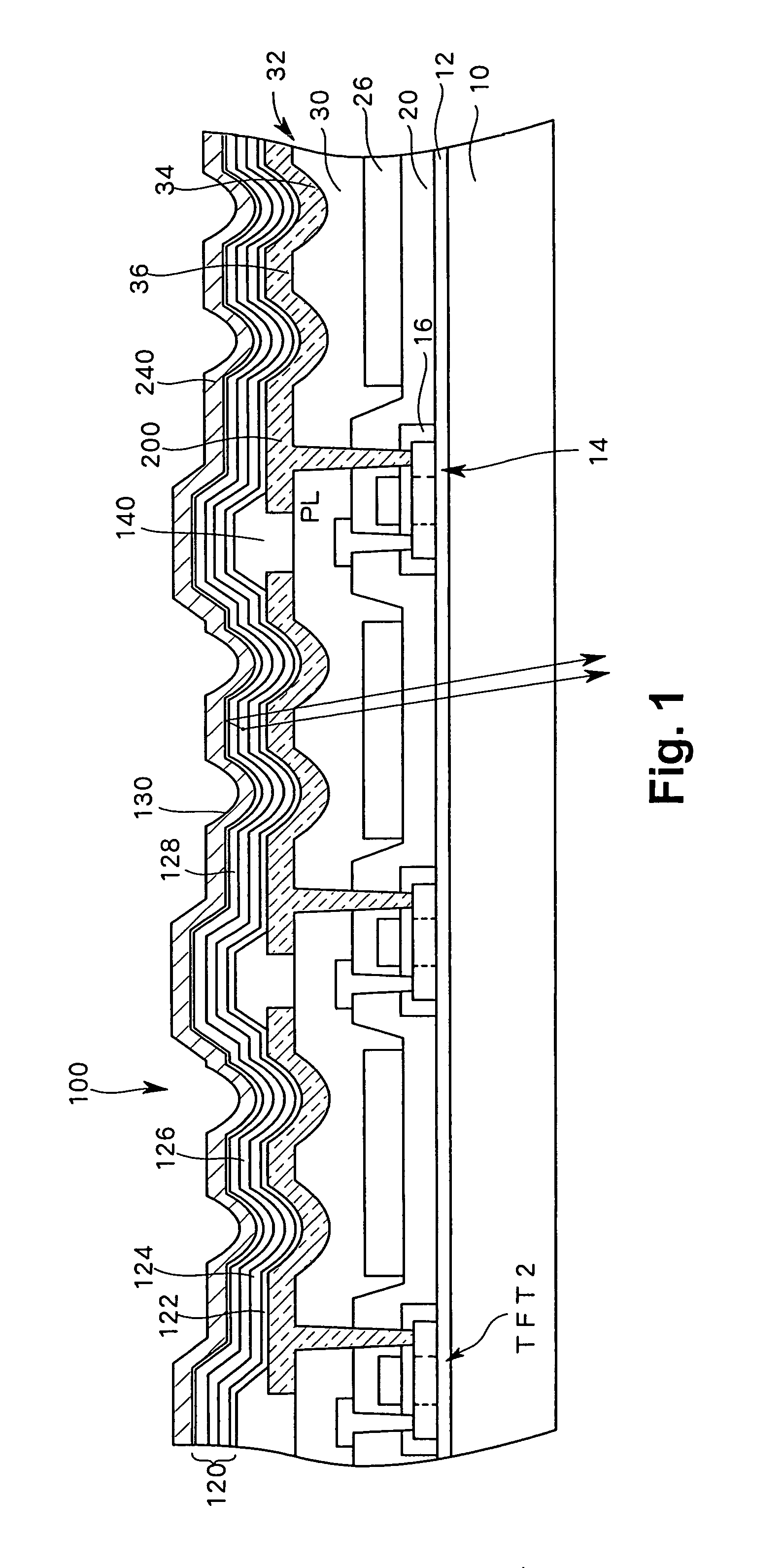Light-emitting display
a technology of light-emitting display and display screen, which is applied in the direction of instruments, discharge tube luminescnet screens, static indicating devices, etc., can solve the problems of strong interference, achieve high accuracy of adjustment, improve display quality, and improve manufacturing process efficiency
- Summary
- Abstract
- Description
- Claims
- Application Information
AI Technical Summary
Benefits of technology
Problems solved by technology
Method used
Image
Examples
Embodiment Construction
[0032]Best modes of the present invention (hereinafter referred to as embodiments) will now be described with reference to the accompanying drawings.
[0033]FIG. 1 schematically shows a cross sectional structure of an important part of a light emitting display device according to an embodiment of the present invention. FIG. 2 shows, as such a light emitting display device, an example of an equivalent circuit of an active matrix type display device having a thin film transistor (TFT) as a switch element controlling an emitting element for each pixel. As a light emitting display device, an organic EL display device using an organic EL element as an emitting element will be described hereinafter as an example.
[0034]In an active matrix type organic EL display device, a plurality of pixels are arranged in a matrix on a transparent substrate 10 formed of glass or the like, and each pixel includes, as illustrated in FIG. 2, an organic EL element 100, a first thin film transistor (hereinafter...
PUM
 Login to View More
Login to View More Abstract
Description
Claims
Application Information
 Login to View More
Login to View More - R&D
- Intellectual Property
- Life Sciences
- Materials
- Tech Scout
- Unparalleled Data Quality
- Higher Quality Content
- 60% Fewer Hallucinations
Browse by: Latest US Patents, China's latest patents, Technical Efficacy Thesaurus, Application Domain, Technology Topic, Popular Technical Reports.
© 2025 PatSnap. All rights reserved.Legal|Privacy policy|Modern Slavery Act Transparency Statement|Sitemap|About US| Contact US: help@patsnap.com



